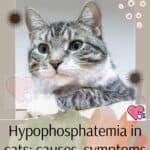
Ehrlichiosis is a disease transmitted by ticks to cats, which can be fatal in a short time: here’s how to recognize and treat it.
Ehrlichiosis is a very dangerous pathology for the cat. In fact, it is a silent infection, which if not properly treated can cause the cat to lose its life. For this, it is essential to know how to identify it and what to do: let’s find out together.
Ehrlichiosis in cats: what it is and what are the causes
As we have anticipated, Ehrlichiosis is transmitted to the cat by the bite of common ticks.
The responsible for the onset of this pathology is the Ehrlichia bacterium. Therefore, it is the most common vector disease, being carried by parasites.
In fact, after having fed on the blood of an infected cat, ticks carry the bacterium and transmit it to another animal, after having infested it. Ehrlichia attacks red blood cells, altering their functioning, and reduces the production of platelets, decreasing their quantity.
Ehrlichiosis progresses very quickly in cats: within a few days it passes from the acute to the chronic form. The bacterium, in fact, can affect the cat’s meninges, kidneys, liver and lungs, leading to death.
How to spot it: the symptoms
Unfortunately, understanding that your cat has Ehrlichiosis is not easy at all.
In fact, it is a disease that, in its early stages, does not cause any symptoms.
If it is not treated promptly, after a few months of undisturbed progression, the disease could cause the appearance of the following disorders:
- High fever;
- Lack of appetite in cats
- Swelling of the joints
- Ache;
- Nose bleeding;
- Anemia;
- Weakness and lethargy.
Diagnosis and treatment of Ehrlichiosis in cats

How is Ehrlichiosis in cats diagnosed?
Since this is an asymptomatic and very life-threatening pathology, the best advice is to subject the cat to an annual control test by the veterinarian.
It is a simple, fast and not at all invasive procedure: just take a blood sample and wait 10 minutes to get the answer.
If not, how is the disease treated? Unfortunately, it is a degenerative pathology. For this, there is no definitive cure. The health conditions of the cat can be kept under control with a continuous treatment of medicines.
Of course, given the origin of the disease, prevention is essential. Although a vaccine against Ehrlichiosis has not yet been formulated, you can protect your four-legged friend from fleas, ticks and other parasites, by resorting to pesticides for cats .






